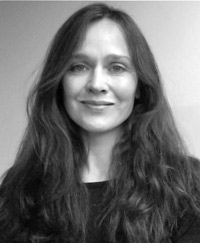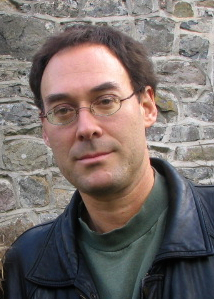
by Prof. Sarah Pink
As part of the integration activities, in the Department of Media, the Doctor of Arts Seminar at Media Lab is pleased to offer a general lecture and workshop on the topic of visual and sensory ethnography. Prof. Sarah Pink, from the University of Loughboro in the UK will lead the activities. Dr. Marja Seliger will be the faculty person throughout the course.
Objectives:
1. To present the idea of Visual Ethnography as a route to knowledge
2. To present the method of The Moving Camera
3. To invite participants to engage in a research task that involves them to use the method of the Moving Camera
4. To invite participants to present the images they have produced as part of the research task and reflective commentary on their use of the method, and to generate discussion through this
5. To present examples of uses of the Moving Camera in applied research and to generate discussion about the potential of this method in design and arts research
Learning outcomes:
1. An introductory overview understanding of Visual Ethnography
2. An understanding of the method of the Moving Camera
3. Knowledge of uses of moving camera methods in existing research
4. Experience of applying the Moving Camera method to a research task and insights gained through this and through discussion of the task with the group
5. A basis from which to consider the potentials of the application of the Moving Camera method in design and arts research.
Number of credits: 1 ECTS
Audience: The workshop is targeted to Doctor of Arts students. Students from the Department of Media (Graphic Design, New Media, and Photography) will be given priority. There is a maximum enrolment of 14 students. Students are expected to participate in ALL the activities of the course, including the general lecture and final presentations and discussion.
Monday afternoon:
Session 1 (Open lecture): Visual Ethnography as a Route to Knowledge (Sept. 19, 13:00-15:00, lecture room 4319)
This lecture introduces the idea of Visual Ethnography. I first set out the methodological principles that inform doing visual ethnography. I then focus on some of the ways that the visual is part of the ethnographic context such as: as part of a local and global ‘visual cultures’; as multisensory material artefact and digital text; as representation; and as a process of exploration whereby researcher and participant co-produce knowledge by using existing images or by making images together; and as part of a scholarly way of knowing and presenting work to other scholars and wider publics. The lecture will last for approximately one hour and will be followed by an opportunity to ask questions
Tuesday morning: Session 2 (Workshop): The Moving Camera (Sept. 20, 10:00-12:30, lecture room 4319)
This workshop will explore how the Moving Camera method might be engaged as a way of (audio)visually exploring the environments and experiences of our everyday lives.
1. Introducing ourselves and our research projects and objectives.
2. Presentation of the method of the Moving Camera, which might involve walking, or otherwise moving through the environment with video or with a stills camera. This presentation will take the form of an informal lecture during which participants will be welcome to ask questions and develop discussion
3. Presentation of the research task. Before Wednesday’s session participants will be invited to undertake a short research task. This will involve using a camera to explore the experience of an environment, artefact or practice in movement. The next day participants will be asked to present short reflexive narratives to represent and discuss what they have learnt from this research experience, using the images recorded.
4. Discussion of and questions about the research task.
Tuesday afternoon: participants undertake the research task independently.
Note: There will not be any instruction on technical matters related to photography or video. It is expected that each of the students can independently produce their own audio-visual materials. Students will be responsible for securing access to a server where they can upload their materials in order to show them as part of the workshop activities. Students will also be responsible for also backing up their materials into suitable media such as a memory stick or DVD so that, in the event that there is a problem with the server, they can still be accessed by the faculty in a timely manner for class discussion. If you are a student at Media Lab and you need to make these arrangements, please speak with Mr. Ilpo Kari in the library.
In order to receive the credit for participation, you need to be sure that you sign in the attendance sheet every day. Dr. Marja Seliger will be responsible for keeping attendance.
Wednesday: Session 3 (Workshop): Building Insights. (Sept. 21, 10:30-12:30, lecture room 4319)
In this workshop we will present and discuss the results of the research task produced by participants. As we go along we will seek to develop a series of insights about how doing visual ethnography in movement can offer us routes to knowledge about the environments, ‘things’ and practices that we are seeking to research.
The session will conclude with a short presentation and discussion of the potential of such techniques in applied research. Participants will be encouraged to reflect on how such methods might inform the making of interventions in design and arts contexts.
Sign up:
heikki.nuutinen@aalto.fi
Recommended reading and on-line resources:
Coover, R. (2008) Outside / Inside: Virtual Panoramas of Independence National Historical Park, available online at http://www.unknownterritories.org/APS.html.
Ingold, T. (2010a). Ways of mind-walking: reading, writing, painting. Visual Studies, 25(1), 15-23
> Available now in Arabia Campus Library, ask Sarah Pink file!
Ingold, T. (2010b), Footprints through the weather-world: walking, breathing, knowing. Journal of the Royal Anthropological Institute, 16: S121–S139.
http://onlinelibrary.wiley.com/doi/10.1111/j.1467-9655.2010.01613.x/abstract
Irving, A. (2007), Ethnography, art, and death. Journal of the Royal Anthropological Institute, 13: 185–208.
http://onlinelibrary.wiley.com/doi/10.1111/j.1467-9655.2007.00420.x/abstract
O’Neill, M. and P. Hubbard (2010) ‘Walking, Sensing, Belonging: Ethno-Mimesis As Performative Praxis.Visual Studies 25(1):46-58
> Available now in Arabia Campus Library, ask Sarah Pink file!
Pink, S. (2007) Doing Visual Ethnography: images, media and representation in research London: Sage.
Available at Media Lab Library!
Pink, S. (2007) ‘Walking with Video’ in Visual Studies 22(3).
> Available now in Arabia Campus Library, ask Sarah Pink file!
Pink, S. (2008) ‘An Urban Tour’ in Ethnography, 9(2).
http://eth.sagepub.com/content/9/2/175
Pink, S. (2009) Doing Sensory Ethnography, London: Sage Pink, forthcoming
Available at Media Lab Library!
About Sarah Pink: Dr. Pink is Professor in the department of Social Sciences at the University of Loughboro in the UK. She is a widely respected authority in visual and sensory ethnography and the author of several books on the topic. http://www.lboro.ac.uk/departments/ss/staff/staff_biog/pink.html
Posted by Heikki Nuutinen
One Comment



